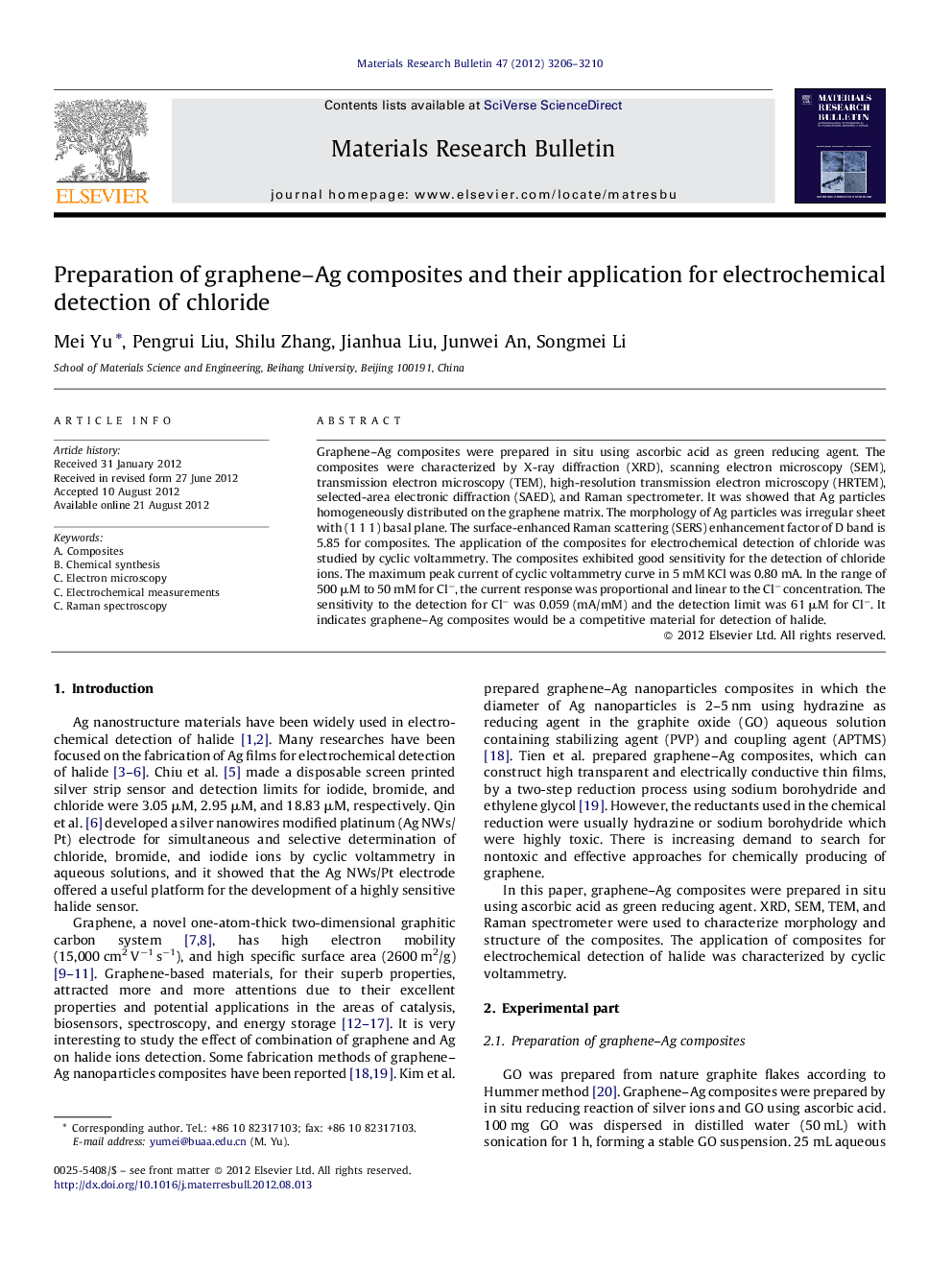| کد مقاله | کد نشریه | سال انتشار | مقاله انگلیسی | نسخه تمام متن |
|---|---|---|---|---|
| 1490085 | 992318 | 2012 | 5 صفحه PDF | دانلود رایگان |

Graphene–Ag composites were prepared in situ using ascorbic acid as green reducing agent. The composites were characterized by X-ray diffraction (XRD), scanning electron microscopy (SEM), transmission electron microscopy (TEM), high-resolution transmission electron microscopy (HRTEM), selected-area electronic diffraction (SAED), and Raman spectrometer. It was showed that Ag particles homogeneously distributed on the graphene matrix. The morphology of Ag particles was irregular sheet with (1 1 1) basal plane. The surface-enhanced Raman scattering (SERS) enhancement factor of D band is 5.85 for composites. The application of the composites for electrochemical detection of chloride was studied by cyclic voltammetry. The composites exhibited good sensitivity for the detection of chloride ions. The maximum peak current of cyclic voltammetry curve in 5 mM KCl was 0.80 mA. In the range of 500 μM to 50 mM for Cl−, the current response was proportional and linear to the Cl− concentration. The sensitivity to the detection for Cl− was 0.059 (mA/mM) and the detection limit was 61 μM for Cl−. It indicates graphene–Ag composites would be a competitive material for detection of halide.
Figure optionsDownload as PowerPoint slideHighlights
► Graphene–Ag composites were prepared in situ using ascorbic acid as green reducing agent.
► The morphology of Ag particles was irregular sheet and Ag particles homogeneously distributed on the graphene matrix.
► The surface-enhanced Raman scattering enhancement factor of D band is 5.85 for composites.
► The composites exhibited good sensitivity for the detection of chloride ions.
Journal: Materials Research Bulletin - Volume 47, Issue 11, November 2012, Pages 3206–3210